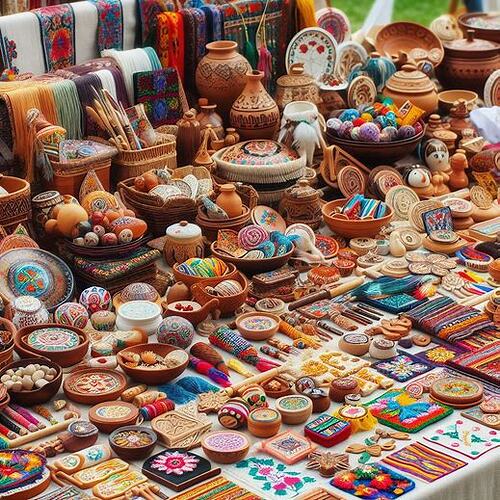Handicrafts
Handicrafts is a broad term that refers to the production of products using people’s hands and manual skills. These industries refer to a wide variety of arts, crafts, and hand-made products. Some of the most important crafts include:
-
Felting: Production of all kinds of felt products, including bags, shoes, and even interior decorations.
-
Carpet weaving: carpet and rug weaving by hand, which often uses special art and beautiful patterns.
-
Pottery: Making pottery products such as dishes, tiles, and pottery decorations.
-
Jewellery: Making jewelry and ornaments using various metals and precious stones.
-
Leather embroidery: Production of all kinds of leather products, including bags, shoes, and clothes.
-
Hanging: Making pendants and decorations from different materials such as wood, glass, and metal.
-
Painting and graphics: Production of paintings and works of art by hand using different tools.
-
Carpet weaving and embroidery: Weaving carpets and producing handmade products from traditional fabrics.
Handicrafts also have cultural and historical significance and can help preserve local values and traditions.
Benefits of crafts
Crafts have many benefits, including:
-
Preservation of culture and history: Handicraft products are usually related to the culture and history of a society and can help preserve cultural and historical heritage.
-
Development of skills: The production of handicraft products requires manual skills that encourage people to learn and develop their skills.
-
Supporting the local economy: Handicraft production is often done locally and by purchasing these products, you strengthen the local economy.
-
Environmental protection: The production of handmade products usually uses local and limited materials, which can be effective for environmental protection.
-
Diversification in markets: Handmade products often have unique designs and patterns, which can diversify local and global markets.
-
Economic development in rural areas: Handicraft productions can contribute to economic development and employment in rural areas.
-
Promotion of art and taste: Handicrafts often have a lot of art and taste, and paying attention to these products encourages the promotion of art.
By supporting handicrafts, we can contribute to more sustainable economic growth and preserve cultural and artistic diversity.
In the current situation, Afghan women are mostly engaged in handicrafts, including
In the current conditions of Afghanistan, women play an important role as handicraft producers. These efforts in various economic and cultural fields provide Afghan women with happiness. Some of the reasons for this participation include the following:
-
Strengthening the family economy: Participating in handicraft production allows women to strengthen their family economy and participate in providing the family’s economic needs.
-
Economic Empowerment: By creating entrepreneurial opportunities and economic empowerment of women, these experiences can help the economic development of the sheriff of the regions.
-
Preservation of culture and art: By producing handicraft products, Afghan women can help preserve local culture and arts and transmit cultural values to the next generations.
-
Increasing awareness of women’s participation: Women’s participation in handicraft activities can develop their awareness of economic and social possibilities.
-
Strengthening the social role of women: Participation in the production of handicrafts can strengthen the economic and social role of women and give them a sense of independence and empowerment.
Despite the various challenges in Afghanistan, women are recognized as an effective factor in the economic and cultural development of the country with their efforts in handicrafts.



